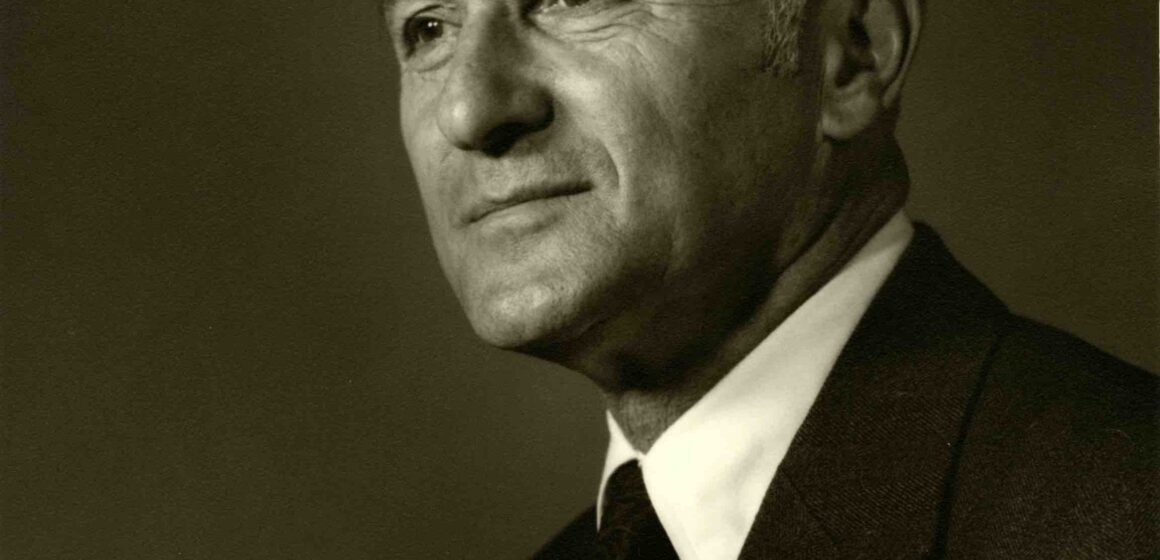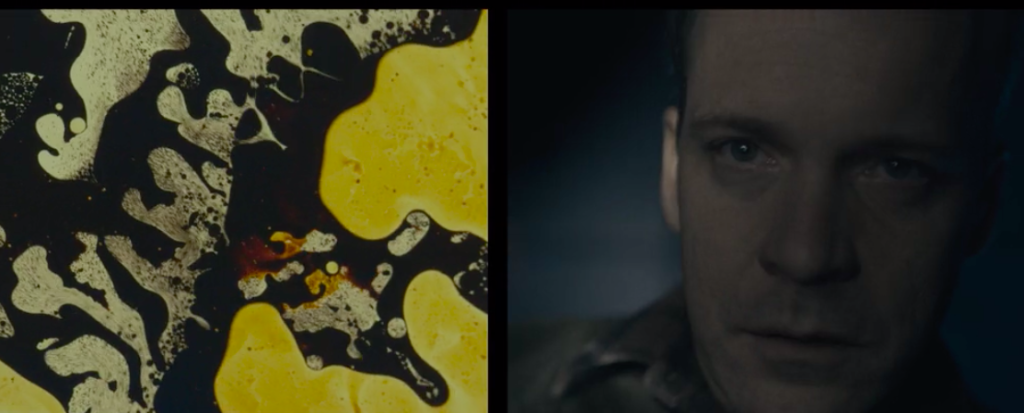
“He was creator and destroyer, an outlaw who served power, a gentle hearted torturer… above all he was an instrument of history,” writes Stephen Kinzer of Sidney Gottlieb, chief of the CIA’s mind control program notoriously known as MKULTRA.
The revelations of Kinzer’s fascinating and disturbing biography, Poisoner in Chief, are unsettling enough. Kinzer, former New York Times reporter turned Brown University historian, makes a convincing case that the genial Gottlieb was a countercultural war criminal. The hundred-plus MKULTRA experiments conducted from 1952 to 1970–“sub-projects” Gottlieb called them–destroyed lives of hundreds, perhaps thousands of unwitting people, in service of the CIA’s futile search for ways to definitively control human behavior. And after inflicting torture on countless persons Gottlieb retired to a life of good works on an ecofriendly goat farm in rural Virginia.
The idea that Sidney Gottlieb was also an “instrument of history” is more unsettling yet and elevates Poisoner in Chief from fascinating investigative expose to potent politico-cultural history. As chief of the CIA’s Technical Services Division, Gottlieb never lost his belief that LSD might be harnessed for purposes of espionage and covert action.
It was a peculiar faith. Lysergic acid was a known chemical compound found in ergot, a bacteria that grows on bread, known to cause hallucinations if ingested. A Swiss chemist developed a variation that he called LSD-25 that had extraordinary effects, even in tiny doses. It induced hallucinations, hysteria, confessions, confusion, ecstatic insight, and deep depression. After taking LSD himself, Gottlieb became fascinated with its effects and became certain it could be used to advance the CIA’s mission. So he sanctioned the distribution of LSD to scientists around the country, never imagining the cultural consequences.
“First, [LSD] leaked into elite society,” Kinzer writes, “then it spread to students who took it in CIA-sponsored experiments. Finally it exploded into the American counterculture, fueling a movement dedicated to destroying much of what the CIA defended and held dear.” (186).
MKULTRA, or something like it, might well have happened if Gottlieb had never been born. But his affable amoral mind shaped its direction and sharpened its focus on LSD. As history’s instrument, he embodied weirdness.
With the Nazi Scientists
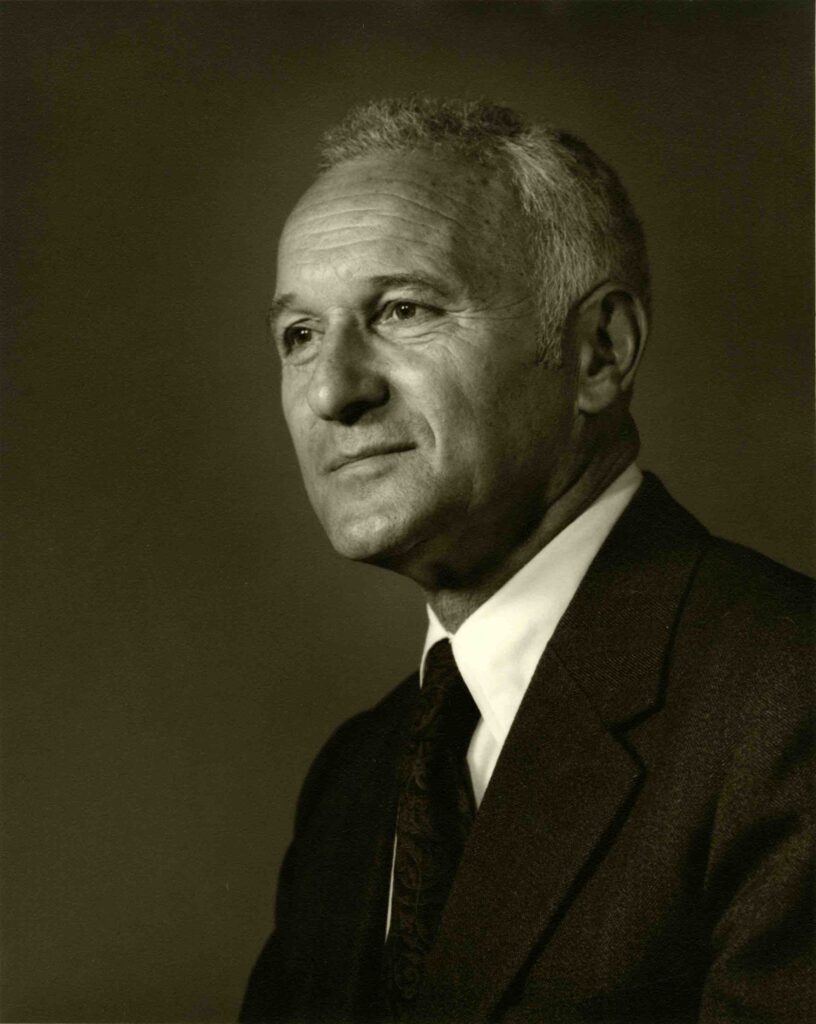
Gottlieb’s story begins at James Monroe High School in the Bronx in the 1930s. The son of Hungarian Jewish immigrants, Gottlieb excelled in the sciences at City College. He went on to earn advanced degrees in chemistry from the University of Wisconsin and California Institute of Technology. During World War II, he married and worked as a scientist for various government agencies. In 1951, his mentor at Wisconsin recommended him for a job at the newly-created CIA.
Gottlieb’s professional rise was powered by the imperatives of the Cold War. In the minds of U.S. policymakers and officials, fear of the Soviet Union and allied communist parties justified virtually any course of secret action. Kinzer weaves in the story of Operation Paperclip, a CIA program to tap the expertise of former Nazi scientists. Just a few years earlier at Nuremberg, the U.S. prosecutors had convicted and hanged seven German scientists who had experimented on human subjects. Now Gottlieb was chatting them up as paid consultants.
By combining psychology and chemistry, Gottlieb sought to use science to make Americans safe from the threat of communism. MKULTRA, Kinzer notes, grew out of “a conviction that became an article of faith at the CIA: there is a way to control the human mind, and it can be found, the prize will be nothing less than global mastery.”
Sidney Gottlieb shared this faith with three of the most powerful CIA men: counterintelligence chief James Angleton, operations chief Frank Wisner, and deputy operations chief Richard Helms. Kinzer shows how Helms enabled Gottlieb’s crimes for two decades and then destroyed most of the paper trail
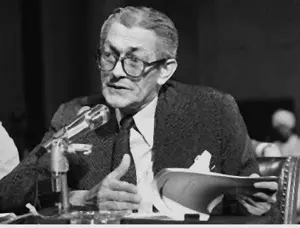
Angleton’s blessing was no less important. As counterintelligence chief and assassination consultant, Angleton assessed the bonafides of defectors and the techniques for killing people. He was involved in the search for truth serum and helped put together the MKULTRA network in 1952 and took LSD himself on at least one occasion. Working in the landscape he called a “wilderness of mirrors,” Angleton often relied on MKULTRA techniques. Soviet defector Yuri Nosenko, held in a CIA black site from 1964 to 1969, said that he was dosed with LSD while in Angleton’s custody.
‘Jumped or Fell’
The legacy of CIA hubris was lethal from the very start. In 1951, a group of CIA scientists, led by Gottlieb, flew to Tokyo where they oversaw the interrogation of four suspected Russian spies. The men were injected with stimulants and depressives, and then subjected to harsh interrogation. After they confessed to spying, “They were taken out into Tokyo Bay, shot, and dumped overboard,” Kinzer writes.
In using captive populations for espionage experiments, the mind control program served as a model for future CIA operations throughout the Cold War.
“Gottlieb’s work contributed decisively to the development of techniques that Americans and their allies used at detention centers in Vietnam, Latin America, Afghanistan, Iraq, Guantanamo Bay and secret prison’s around the world,” Kinzer writes.
From the beginning, “interrogators worked without any outside supervision. This set a precedent that marked a breakthrough for the CIA. By opening prisons, the Agency established its right not only to detain and imprison people in other countries but to interrogate them harshly while they were in custody without regard for U.S law.”
Gottlieb’s role in the violent demise of his colleague, Frank Olson, is chilling.

Olson, a CIA chemist who worked on MKULTRA projects, fell to his death from the upper floors of New York hotel in November 1953, a tragedy dissected in atmospheric detail in Errol Morris’s 2017 docudrama Wormwood.
With the help of Olson’s son, Kinzer dismantles the CIA’s cover story that Olson had a bad reaction to an LSD trip two weeks before and “jumped or fell” through the closed window of a hotel room overlooking Penn Station. In fact, Olson had witnessed brutal interrogation and disposal of human subjects in MKULTRA sites and wanted to quit his job. After Kinzer’s account, there can be little doubt Olson was killed by CIA operatives, not that anyone in Langley cares to fess up. The cover-up launched by Gottlieb and his masters is still in effect today.
Follow the Money
Kinzer mines the one batch of MKULTRA documents that escaped the CIA’s shredding machines: the accountants’ files. While Helms and Gottlieb shredded the records of the MKULTRA experiments, they overlooked the financial records. Author John Marks obtained them via the Freedom of Information Act in the 1980s, a story he tells in his seminal book “The Search for the Manchurian Candidate.” These files remain one of the best sources for understanding the scale of MKULTRA.
(And the story is still emerging, A new batch of declassified MKULTRA records was just released by Black Vault.)
Kinzer follows the CIA’s money to 40-plus different universities, hospitals, clinics, and prisons where the experiments were conducted, including a castle in Germany, a brothel in Greenwich Village, an addiction treatment center in Kentucky, McGill University in Toronto, and a Veteran’s Administration hospital in Menlo Park, California.
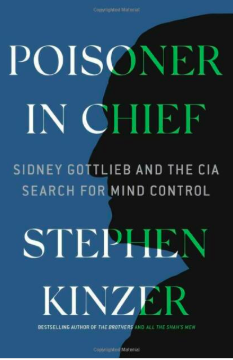
The casual and cruel abuse of human life was endemic in MKULTRA research. In Kentucky, recovering drug addicts, most of them African-American, were given LSD up to four times a day for 77 straight days in the 1960s. Ewen Cameron, a Canadian doctor, experimented with wiping of hundreds of his patient’s memories. The Canadian government later paid $100,000 to 77 of Cameron’s patients or their descendants (266). In Atlanta, imprisoned gangster Whitey Bulger was dosed with seven other convicts. “We experienced horrible periods of living nightmares, and even blood coming out of the walls. Guys turning into skeletons in front of me,” Bulger wrote in his memoir. “Gottlieb,” Kinzer observes acidly, “was not a sadist but he might as well have been.”
Poisoner in Chief is also a story about the failure of oversight. The abuses might have been caught, checked or corrected if anyone had known about them. In 1956, Senator Mike Mansfield, a Montana Democrat, proposed the creation of a Senate Intelligence Committee to oversee the work of the CIA. He had the support of 37 senators. The agency lobbied a dozen senators into withdrawing support for Mansfield’s bill and it was defeated by a wide margin. “The CIA was safe,” Kinzer writes. “So was MKULTRA.” The idea of congressional oversight would not be revived for another 20 years.
But even after the exposure of MKULTRA and the admission of Olson’s “suicide” in 1975, its influence was not dispelled. The creation of the House and Senate Intelligence Committees in 1976 and the Foreign Intelligence Surveillance Act courts in 1978 did not prevent the son of MKULTRA– the post 9/11 torture regime that was not abolished until 2009.
“Congressional oversight of intelligence agencies has not led to deep changes in the ways those agencies work,” Kinzer notes. When my son asked me recently, “Don’t you think there’s still some version of MKULTRA today?” I said there’s no evidence. But who knows?
Today, MKULTRA is a household term, a template for Hollywood thrillers like the Bourne triology, catnip for novelists, and a universal signifier of conspiratorial manipulation. When the FBI identified fringe conspiracy theories as a domestic terrorist threat for the first time last month, the Bureau also observed that one factor driving the intensity of the threat is “the uncovering of real conspiracies or cover-ups involving illegal, harmful, or unconstitutional activities.” MKULTRA was one of the original real conspiracies of the American national security state.
It amounted to a CIA sanctioned crime wave that lasted two decades. Its reliance on LSD fueled the countercultural revolution of the 1960s. It’s bland treachery sustains conspiracy theories about the El Paso mass shooting today. Understanding Sidney Gottlieb, Kinzer concludes, “is a deeply disturbing way of understanding ourselves.”


